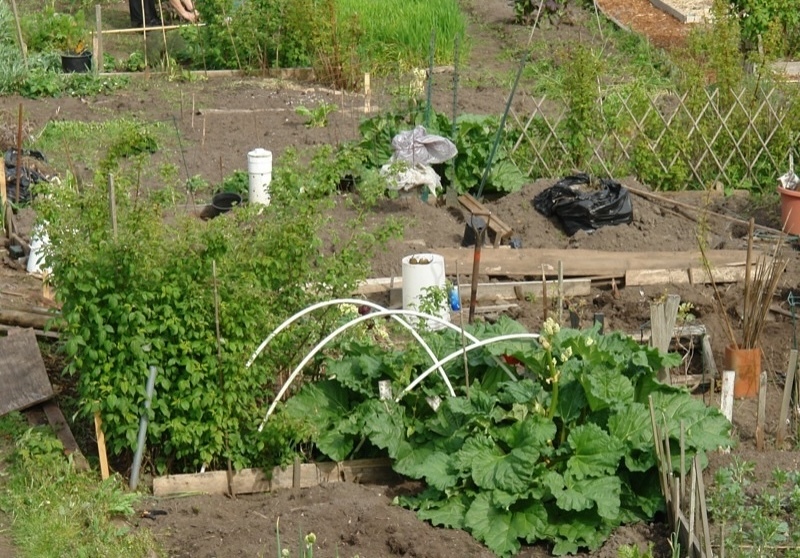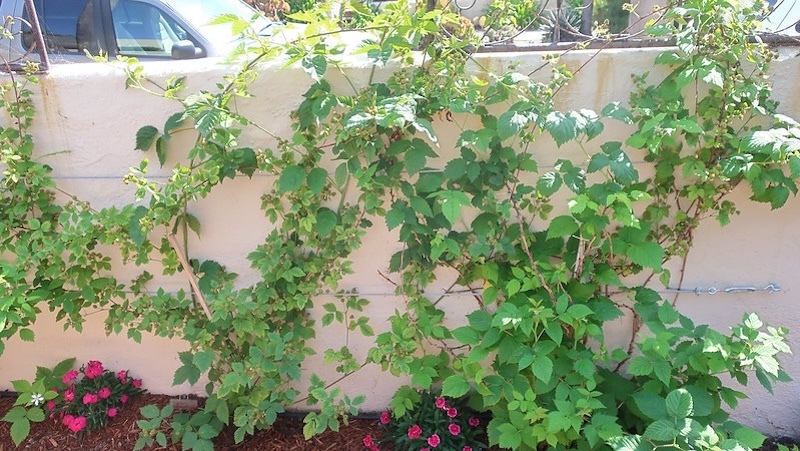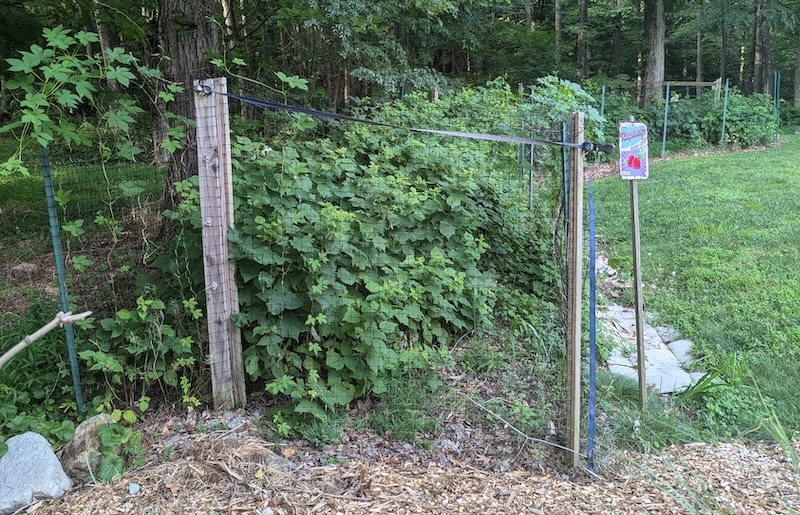Growing raspberries in the garden is one of the great experiences of summer. Picking the berries just at peak ripeness makes for the most delicious pies, jams, or yogurt topping. Raspberries are cane fruits and produce shoots of new stems (canes) annually. Planting raspberries amongst other soft fruits (berries, currants, gooseberries, etc) is a good way to make an edible garden more ornamental with season-long interest.

Photo by Josh Larios, cropped, Flickr, copyright CC BY-SA 2.0 DEED
Raspberries are winter hardy in almost all of the USDA growing zones (3-10) and can be cultivated for up to 30 years given the right growing conditions. These plants require loose, well-draining soil to avoid root and stem rot diseases, such as verticillium or phytophthora. Raspberries also need full-to-part sun exposure to encourage good flowering and complete pollination by sun-loving beneficial insects. Shade during the hottest part of the day will help reduce the amount of supplemental watering needed in the hottest climates.
Shrubs To Plant With Raspberry Bushes
Raspberries reproduce from sucker growth near the base and can be planted as part of an informal hedge to incorporate ornamental plants with edible ones. The thorns of older canes can be useful for excluding wildlife or other unwanted animals in the landscape and work well in naturalized areas at the edges of a property or along a fence line. Good shrub companions include spirea, viburnum, lilac, forsythia, and nandina, which can be left unpruned for a loose, natural look.
Perennials To Plant With Raspberry Bushes
Other perennial food crops such as blackberries, rhubarb, and blueberries all grow in the same conditions as raspberries and could be combined in a dedicated fruit garden. Add strawberries as a ground cover to round out a very low-maintenance garden with fresh fruit from early summer to fall.
Ornamental perennials like yarrow, artemisia, and ajuga work well as both ground cover plants and pollinator plants. Raspberries require full fertilization for their fruit (technically a drupe) to form properly. Encouraging pollinators is the best insurance for a successful harvest.
In a small garden space, raspberries can be used at the back of a garden bed for height while more ornamental herbaceous perennials can add depth and interest to the front of the border. For the front layer, consider planting dianthus, bearded irises, coneflowers, and peonies, all classic cottage garden plants. These plants like the same conditions as raspberries and are easy to manage near shrubs with heavy cane growth.

Photo by K M, unmodified, Flickr, copyright CC BY 2.0
Annuals To Plant With Raspberries
Kitchen gardens combine a collection of edible plants with pollinator plants to ensure a diverse yield of herbs, fruits and vegetables. Catch crops, like sweet alyssum, nasturtium, and calendula, are useful in attracting pollinators and drawing pests away from raspberries growing in a raised bed. The catch crops can be planted a few feet away from the raspberries to trap aphids or beetles, which could damage the cropping fruit. Turnips and other root vegetables are a catch crop for harlequin beetles, which often dine on the foliage of raspberries. Alliums (garlic, bunching onions, or ornamental types) are a natural repellent for deer and insect pests and can be planted around the edges of a raspberry planting, saving space in the garden.
Best Companion Plants For Raspberries in Containers
Growing raspberries in containers is a great idea for gardeners short on space. Newer varieties are small enough to live permanently in a container while producing very sizable crops. Include annuals with shallow roots, such as calibrachoa, sweet alyssum, nasturtium, and basil to fill in gaps and attract pollinators for good fruit production. These plants will bloom for a long period while looking good until the first frost in fall.
Raspberries growing in containers need fertilizing at least twice during the growing season. Apply a granular, timed-release formula in the spring when new growth appears, and just as the plants begin to flower in the early summer. A weak diluted liquid fertilizer can be applied later in the summer if the companion annuals appear to need a boost.
Plants Not To Grow With Raspberries
Raspberries are some of the easiest plants to grow and can be planted alongside basically any other food plant and most ornamental plants. If a raspberry bush contracts a disease like phytophthora or verticillium wilt do not replace it with another member of the Rosaceae family, which includes some of the most popular fruits (apple, almond, plum, nectarine, blackberries) and ornamental flowers (namely roses). The likelihood of the replacement plant contracting the same disease from the soil is high.
Avoid planting raspberries near members of the nightshade family, like potatoes and tomatoes. These plants share the same fungal and bacterial diseases and may pass a pathogen to the other plant.

Best Plants To Grow With Raspberries
Grow raspberries with plants that prefer full to partial sun, average moisture, and moderate fertilizing through the summer months. Many annuals, including sweet alyssum, nasturtium, and calendula, are wonderful at attracting beneficial pollinators to the garden, while keeping pests in check. Add perennial ground covers like ajuga, yarrow, and low-growing daylilies near raspberries to attract pollinators and suppress weeds.


